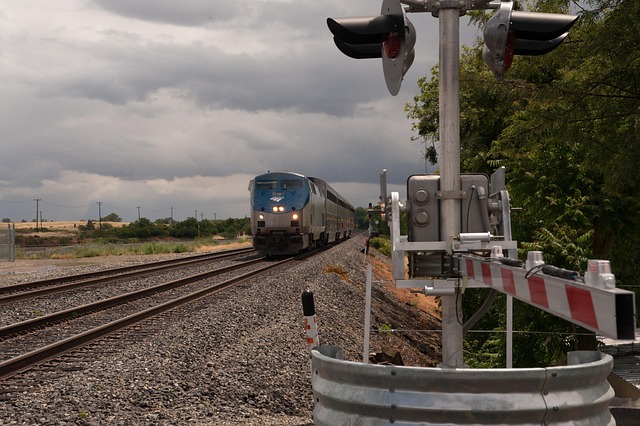Category: Ada Compliant Porta Potty San Bernardino CA
Ada Compliant Porta Potty San Bernardino CA: A Comprehensive Insight
Introduction
In the ever-evolving landscape of public sanitation, the concept of an “Ada Compliant Porta Potty” has emerged as a game-changer, particularly in urban areas like San Bernardino, California. This innovative solution combines accessibility, sustainability, and technology to address the pressing needs of modern communities. In this article, we embark on a journey to explore every facet of Ada-compliant porta potties in San Bernardino, from their definition and historical roots to their global impact, technological innovations, and future potential. By delving into these depths, we aim to equip readers with a comprehensive understanding of this transformative sanitation technology.
Understanding Ada Compliant Porta Potty San Bernardino CA
Definition and Core Components
An Ada-compliant porta potty, specifically tailored for San Bernardino or any urban setting, refers to a portable restroom facility designed and constructed in adherence to the Americans with Disabilities Act (ADA) standards. These standards ensure that individuals with disabilities have equal access to public accommodations, including restrooms. The core components of an ADA-compliant porta potty typically include:
- Ramp Entry: A gradual, inclined surface or ramp allows wheelchair users and individuals with mobility issues to easily enter and exit the unit without barriers.
- Grab Bars: Located inside the unit, grab bars provide support and aid in transferring from a wheelchair to the toilet seat, promoting safety and independence.
- Accessible Toilet: The toilet is designed to accommodate various needs, including height adjustments for standing or sitting, and may include features like raised toilet seats.
- Adequate Space: The interior provides enough space for individuals with disabilities to maneuver comfortably, ensuring privacy and dignity.
- Ventilation: Proper ventilation systems maintain air quality, reducing odors and creating a more comfortable environment.
Historical Context and Significance
The concept of accessible public restrooms gained prominence in the late 20th century as a response to the growing awareness of disability rights and inclusivity. The ADA, signed into law in 1990, played a pivotal role in establishing specific guidelines for public accommodations, including portable restrooms. This legislation ensured that everyone, regardless of ability, could access essential facilities, fostering a more inclusive society.
In San Bernardino, as in many urban areas, the need for accessible porta potties became increasingly evident due to the city’s bustling downtown, frequent events, and diverse population. Traditional porta potties often fell short in catering to individuals with disabilities, leading to the demand for ADA-compliant alternatives. These restrooms not only address a critical accessibility gap but also contribute to public health and safety by providing clean, comfortable facilities for all users.
Global Impact and Trends
International Influence
The impact of Ada-compliant porta potties extends far beyond San Bernardino’s borders. As urban areas worldwide grapple with similar challenges related to public sanitation and accessibility, this innovative solution has gained global recognition. Many countries have adopted ADA-like standards or created their own to ensure inclusive public spaces. For instance:
- Europe: Cities across Europe have implemented strict regulations for accessible public restrooms, often exceeding the ADA requirements. Countries like the United Kingdom and Germany have established comprehensive guidelines, ensuring that portable restrooms cater to a diverse range of users.
- Asia: In rapidly urbanizing countries like Japan and South Korea, there is a growing emphasis on inclusive design, including accessible porta potties in public spaces and transportation hubs.
- North America: Beyond California, several Canadian provinces and US states have adopted similar accessibility standards, driving the demand for ADA-compliant products worldwide.
Key Trends Shaping the Trajectory
Several trends are shaping the future of Ada-compliant porta potties:
- Sustainability Focus: There is a growing trend towards eco-friendly and sustainable sanitation solutions, leading to innovations in portable restroom technology. This includes the use of biodegradable materials, water recycling systems, and solar-powered lighting.
- Smart Restroom Technology: Integrating smart features into porta potties is gaining momentum. These technologies can monitor occupancy, track usage patterns, and provide real-time data for better management and maintenance.
- Customized Design: As cities become more diverse, there is a need for customizable designs to accommodate various cultural and religious requirements, such as gender-neutral restrooms and prayer spaces.
- Off-Grid Solutions: Remote locations and outdoor events present unique challenges, driving the development of off-grid portable restrooms with self-contained waste management systems.
Economic Considerations
Market Dynamics and Investment Patterns
The market for Ada-compliant porta potties has witnessed significant growth due to several factors:
- Urbanization: Rapid urban development increases the demand for accessible public amenities, creating a steady market for these specialized restrooms.
- Accessibility Legislation: Stringent disability rights laws and regulations prompt businesses and municipalities to invest in ADA-compliant facilities, ensuring legal compliance and enhancing customer satisfaction.
- Event Industry: Outdoor events, festivals, and concerts require portable restroom solutions, with organizers increasingly prioritizing accessible options to cater to a broader audience.
Role in Economic Systems
These restrooms contribute to the local economy in several ways:
- Tourism Boost: Well-maintained, accessible porta potties can enhance the overall visitor experience, encouraging tourism and supporting local businesses.
- Event Hosting: Cities with ADA-compliant restroom facilities become more attractive for hosting large-scale events, generating revenue through event permits and related services.
- Job Creation: The manufacturing, distribution, and maintenance of these portable restrooms support various industries, creating employment opportunities.
Technological Advancements
Innovation in Portable Restroom Technology
The field of portable restroom technology has witnessed remarkable advancements, particularly in recent years:
- Waterless Technology: One of the most significant innovations is the introduction of waterless porta potties, which use safe, biodegradable chemicals to dispose of waste. This technology reduces water consumption and maintenance costs, making it ideal for remote locations and events.
- Solar Power: Solar panels integrated into portable restrooms provide off-grid power for lighting, ventilation, and even water heating, making them suitable for outdoor settings with limited access to electricity.
- Smart Sensors: Advanced sensors can detect occupancy, monitor toilet paper and hand soap levels, and send real-time alerts for maintenance, ensuring optimal hygiene and operational efficiency.
- Digital Management Systems: Restroom management software allows businesses and municipalities to track restroom locations, usage patterns, and cleaning schedules, optimizing resources and improving user experiences.
Impact and Future Potential
These technological advancements offer numerous benefits:
- Enhanced Hygiene: Advanced sanitation technologies, such as UV light disinfection and automatic flushing systems, ensure higher hygiene standards, reducing the risk of disease transmission.
- Environmental Sustainability: Eco-friendly materials and waterless/solar-powered solutions contribute to a smaller environmental footprint, aligning with global sustainability goals.
- Data-Driven Management: Smart restroom technology provides valuable data insights, enabling better decision-making for facility management and urban planning.
- Customizability: Future technologies will likely offer more customization options, catering to diverse cultural, religious, and accessibility needs.
Policy and Regulation
Governing Bodies and Frameworks
The development and deployment of Ada-compliant porta potties are guided by various regulatory bodies and legislative frameworks:
- Americans with Disabilities Act (ADA): The ADA remains the cornerstone of disability rights legislation in the US, setting accessibility standards for public accommodations, including portable restrooms.
- Local Building Codes: Municipal governments enforce building codes that often incorporate ADA guidelines, ensuring compliance with local regulations.
- Health Department Guidelines: Public health agencies provide recommendations and guidelines for maintaining safe and clean portable restroom facilities.
- Environmental Regulations: Depending on the region, there may be additional environmental regulations related to waste disposal, especially in areas prone to water scarcity or ecological sensitivity.
Influence on Development and Deployment
These policies and regulations have a profound impact on the design, construction, and placement of ADA-compliant porta potties:
- Accessibility Standards: Regulations ensure that portable restrooms are accessible to individuals with various disabilities, including visual, auditory, and mobility impairments.
- Safety and Hygiene: Health department guidelines dictate cleaning protocols, waste management practices, and sanitation standards to protect public health.
- Location Considerations: Building codes and zoning regulations may restrict or guide the placement of these facilities, ensuring they are strategically located for maximum accessibility.
- Compliance and Liability: Businesses and municipalities must adhere to these regulations to avoid legal repercussions and ensure a safe environment for all users.
Challenges and Criticisms
Overcoming Obstacles
Despite their numerous benefits, Ada-compliant porta potties face several challenges:
- Initial Cost: The higher upfront costs of designing and manufacturing ADA-compliant units can be a barrier for some businesses and municipalities, especially in smaller communities.
- Maintenance and Cleaning: Proper maintenance and cleaning are essential to maintaining hygiene standards, which may require additional resources and specialized training.
- Accessibility in Remote Areas: Providing accessible restrooms in remote locations or during outdoor events poses unique challenges due to limited infrastructure and accessibility.
Proposed Solutions
To address these issues:
- Financial Incentives: Governments can offer tax incentives or grants to encourage the adoption of ADA-compliant facilities, offsetting initial costs.
- Community Engagement: Involving local disability advocacy groups in the planning process can ensure that solutions meet the specific needs of the community.
- Mobile Solutions: Developing mobile, off-grid porta potties equipped with advanced sanitation technologies can make accessible restrooms more feasible for remote locations.
- Partnerships: Collaborating between private businesses, event organizers, and local authorities can lead to innovative financing and deployment strategies.
Case Studies: Successful Applications
Real-World Examples
Case Study 1: San Bernardino Downtown Revitalization Project
In an effort to revitalize the downtown area, the city of San Bernardino implemented a comprehensive sanitation strategy, including the installation of several ADA-compliant porta potties. These restrooms were strategically located in high-traffic areas, such as near popular restaurants and entertainment venues. The project was met with widespread success, witnessing:
- Increased Foot Traffic: Improved access to clean, accessible restrooms encouraged more visitors to explore the downtown area, boosting local businesses.
- Enhanced User Experience: Individuals with disabilities praised the convenience and accessibility of these facilities, fostering a more inclusive environment.
- Public Health Benefits: Regular cleaning and maintenance led to better hygiene standards, reducing health risks associated with public restrooms.
Case Study 2: Outdoor Music Festival Restroom Revolution
An annual music festival in a nearby county embraced sustainability and accessibility by adopting a fleet of eco-friendly, ADA-compliant porta potties. The event organizers partnered with a local company to provide:
- Waterless Restrooms: The use of waterless technology reduced water consumption and waste generation significantly, aligning with the festival’s environmental goals.
- Solar-Powered Lighting: Integrated solar panels ensured adequate lighting during evening hours, enhancing safety and user experience.
- Customized Design: The porta potties were designed to accommodate different cultural practices, earning praise from attendees with diverse backgrounds.
- Real-Time Monitoring: Smart sensors provided valuable data on restroom usage, helping organizers make informed decisions for future events.
Future Prospects
Potential Growth Areas
The future of Ada-compliant porta potties in San Bernardino and beyond holds immense promise:
- Sustainable Urban Planning: As cities embrace sustainable development goals, these restrooms will play a pivotal role in creating eco-friendly urban spaces.
- Smart City Initiatives: Integrating smart restroom technology with city-wide digital infrastructure can enhance the overall user experience and contribute to data-driven urban management.
- Remote and Outdoor Event Solutions: Innovations in off-grid and mobile restrooms will make accessible sanitation more feasible for events in remote locations, national parks, and outdoor festivals.
- Global Expansion: The global demand for inclusive public spaces will drive the export of these solutions, making them accessible worldwide.
Emerging Trends
Several emerging trends may shape the industry:
- Biophilic Design: Incorporating natural elements into portable restroom design can create a more comfortable and aesthetically pleasing experience, promoting a connection with nature.
- Digital Integration: The integration of augmented reality (AR) and virtual reality (VR) technologies could offer immersive experiences for users, providing information and guidance within the restroom facility.
- Community Engagement Apps: Developing mobile apps that allow users to report maintenance issues, provide feedback, or even book specific restroom locations can improve overall management and user satisfaction.
- Cultural Sensitivity: Restroom design will continue to evolve to accommodate diverse cultural practices and beliefs, fostering inclusivity.
Strategic Considerations
To capitalize on these prospects, businesses and municipalities should:
- Collaborate with Technology Providers: Partnering with innovative companies specializing in smart restroom technology can lead to customized solutions and data-driven insights.
- Engage Disability Advocacy Groups: Continuous dialogue with disability rights organizations ensures that designs remain accessible and meet the evolving needs of the community.
- Explore Public-Private Partnerships: Collaborating on funding, deployment, and maintenance can share resources and responsibilities, making it more feasible to implement these facilities in underserved areas.
- Embrace Sustainability as a Core Value: Integrating eco-friendly practices into restroom management aligns with global sustainability goals and enhances brand reputation.
Conclusion
Ada-compliant porta potties represent a significant advancement in public sanitation, addressing accessibility, sustainability, and technology concerns. From their critical role in urban areas like San Bernardino to their global impact, these restrooms have become an essential component of inclusive, modern cities. As technology continues to evolve, the future looks bright for this innovative solution, offering improved user experiences, enhanced hygiene, and better management. By embracing these changes, communities can create more accessible, sustainable, and enjoyable public spaces for all.
FAQ Section
Q: Are Ada-compliant porta potties more expensive than traditional ones?
A: While the initial cost may be higher, long-term savings in maintenance and compliance make them a worthwhile investment. Financial incentives and partnerships can help offset these costs.
Q: How do I ensure proper maintenance for these restrooms?
A: Regular cleaning schedules, training staff on hygiene protocols, and using specialized cleaning products are essential. Smart sensors can also alert managers to potential issues.
Q: Can these restrooms accommodate individuals using wheelchairs or other mobility aids?
A: Absolutely. The gradual slope of the entrance, sufficient clearance inside, and raised toilets ensure easy accessibility for users with various mobility impairments.
Q: Are there any environmental concerns related to these restrooms?
A: Some technologies, like waterless systems, minimize water usage and waste generation. Solar-powered options reduce energy consumption, contributing to a smaller carbon footprint.
Q: How can I make sure the porta potties are placed in appropriate locations?
A: Engage with local authorities and disability advocacy groups to identify high-need areas. Consider foot traffic, accessibility, and proximity to events or attractions when selecting locations.
Ada Compliant Porta Potty Rental in San Bernardino CA
Ada Compliant Porta Potty Requirements in San Bernardino CA

San Bernardino, California, mandates ADA compliance for public spaces and events, emphasizing access…….
Ada Compliant Porta Potty Rentals for San Bernardino Construction Sites

In San Bernardino, CA, ADA-compliant portable toilet facilities are essential for construction sites…….
Ada Compliant Porta Potty Rental in San Bernardino CA

Renting ADA-compliant portable restrooms in San Bernardino, CA, is essential for event organizers an…….
Ada Compliant Porta Potty Rental in San Bernardino CA

San Bernardino, California construction sites must comply with ADA guidelines for portable restrooms…….
Ada Compliant Porta Potty Rentals in San Bernardino CA

In San Bernardino, CA, renting an ADA compliant porta potty is both a legal requirement and a commit…….
Ada Compliant Porta Potty Rentals in San Bernardino CA

ADA Compliant Porta Potty San Bernardino CA is crucial for creating accessible restrooms, catering t…….
Accessibles Restrooms: Rent ADA Compliant Porta Potties San Bernardino CA

Renting ADA-compliant porta potties in San Bernardino, CA, is crucial for inclusive events, catering…….
Ada Compliant Porta Potty Options & Regulations in San Bernardino CA

In San Bernardino, CA, adhering to ADA compliance standards is vital for renting portable toilets, e…….

